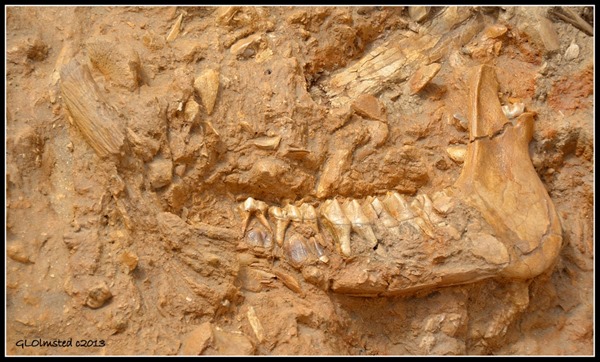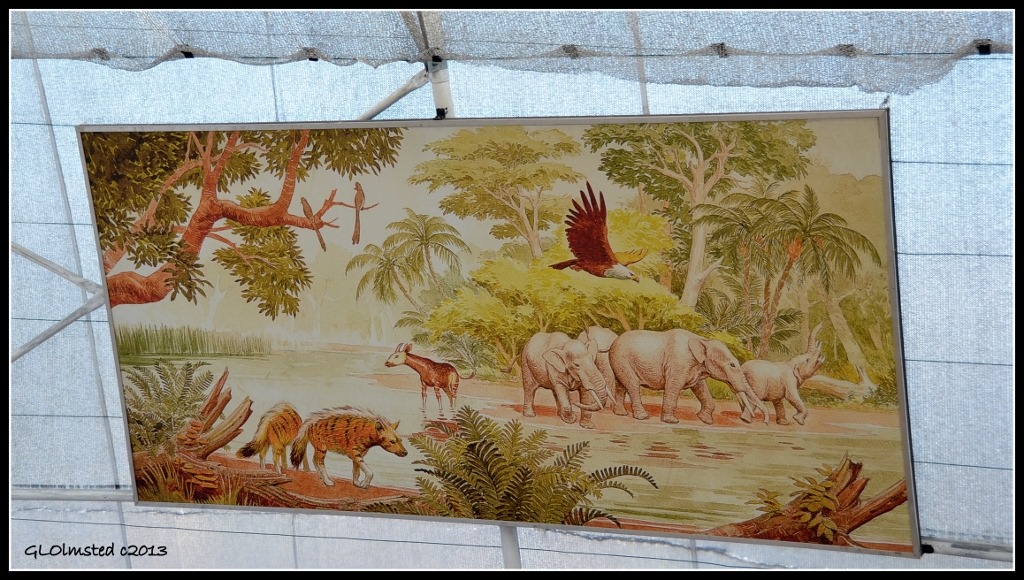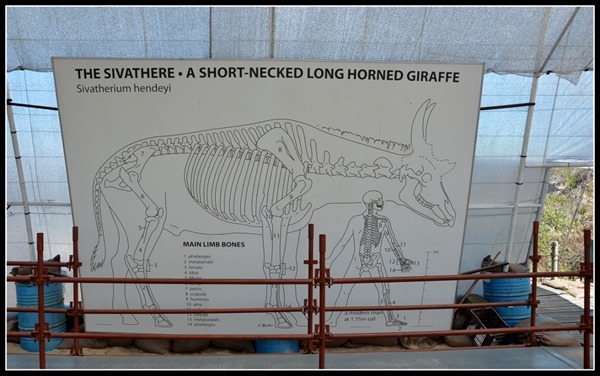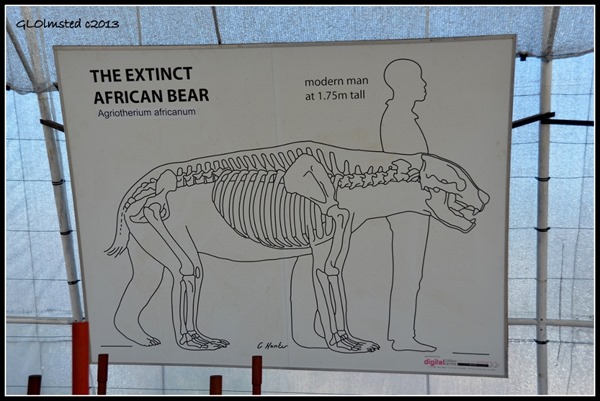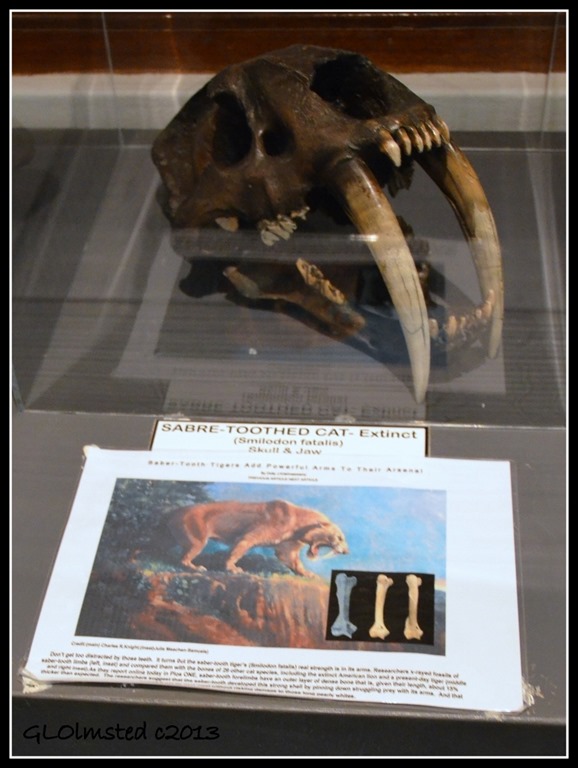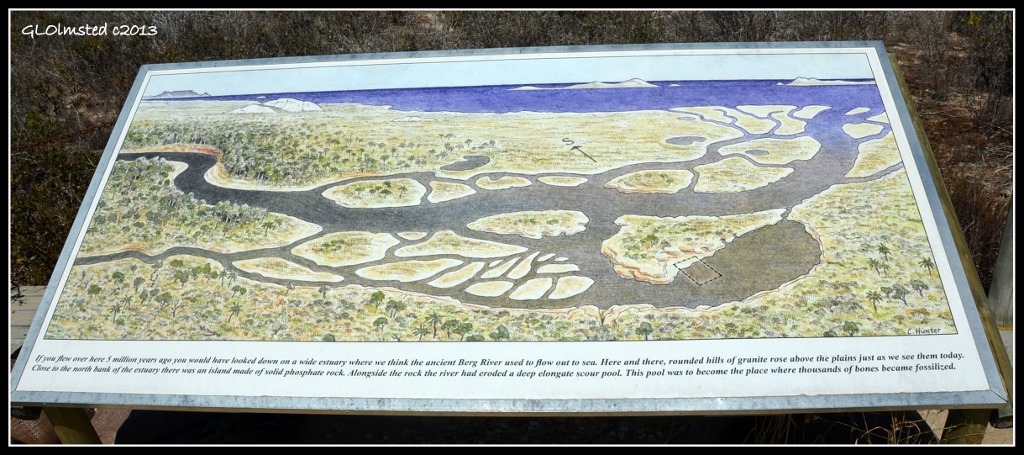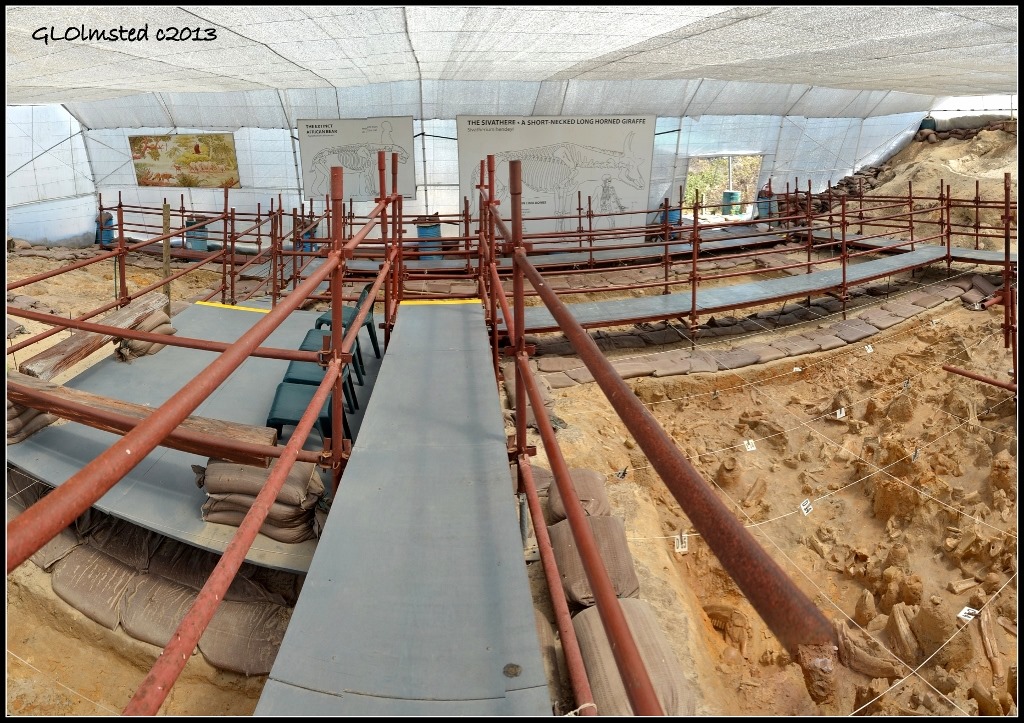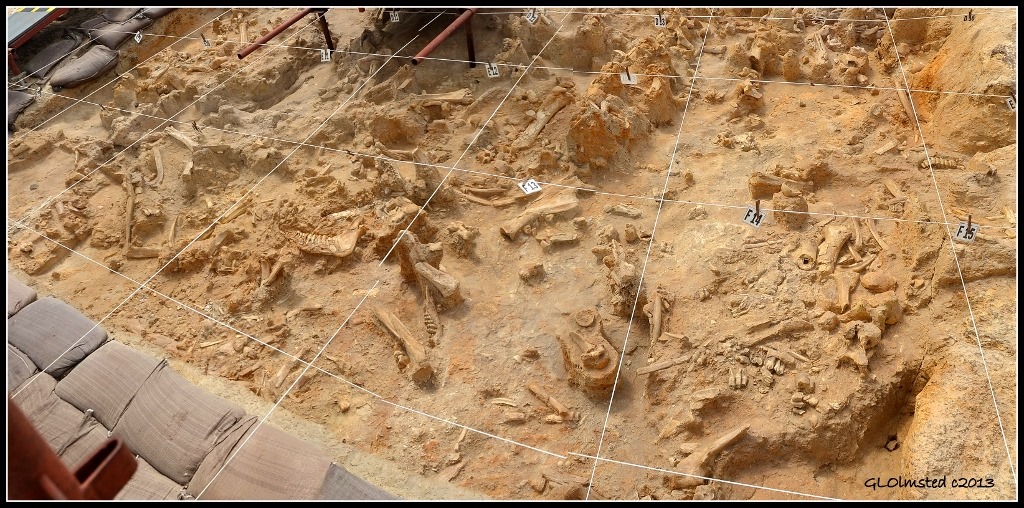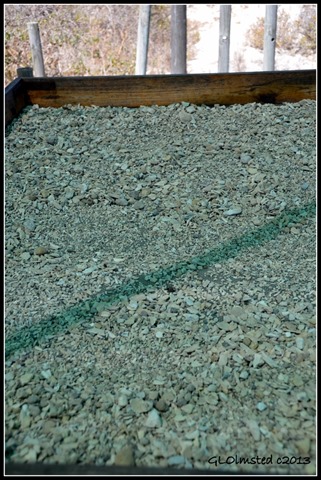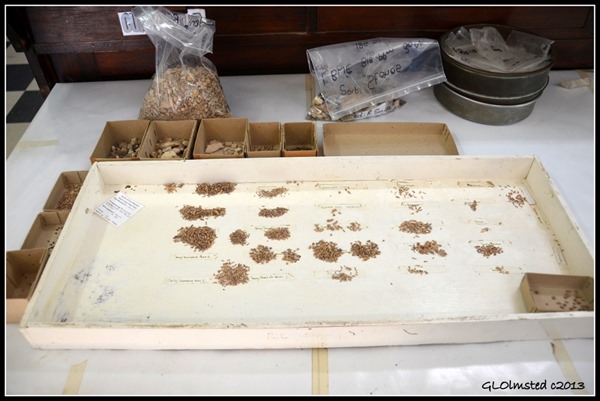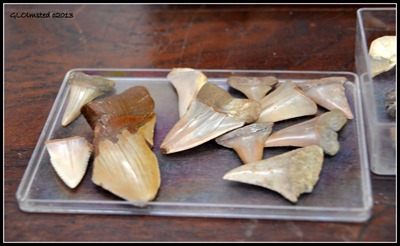5 million year old Silvathere jaw bone
At West Coast Fossil Park the remains of dead animals and plants preserved in rock tell a fascinating story of what lived on Earth millions of years ago along this coast of South Africa.
Imagine you are a Sivathere, sort of like a giraffe but much bigger, browsing on the leaves of small trees found near the mouth of the Berg River. Unbeknownst to you heavy rain fell inland a day ago and flood waters are on the way. You are suddenly caught in a surge that would wash you out to sea if it weren’t for the huge sandbar in the way. Instead you drown and are buried under silt. Over time your bones get filled with minerals like calcium carbonate and silica. Five million years later a man operating heavy equipment while mining for phosphate finds the remains of your bones, fossilized, and has no idea what you are.
I think fossils are cool. So while staying at Wild Spirit Backpackers Lodge when a woman from the west coast told me about the Fossil Park I knew I had to see it. Then at Warmwaterberg Spa I met a woman who lives in Langebaan where the Fossil Park is and she invited me to stay at her home. Perfect. Once again, no such thing as coincidence, and more recommendations on the road.
What lived here then
The Sivathere from the story above are an extinct group of long-horned, short-necked giraffids. When they lived where the fossil park is the environment would have provided more open woodland unlike the current stunted vegetation.
Many other exciting discoveries have been made at the Fossil Park. Like the African bear which is the first known bear found in Africa south of the Sahara and has been adopted as the logo of the fossil park, an extinct true seal and four extinct penguin species.
Other large mammals include sabre-toothed cats, two kinds of elephant, ancestors of the white rhino, wildebeest and giraffe, three-toed horses and antelope. In addition over 20 invertebrate animals (no backbone) from the sea and land-dwelling insects and snails. Plus fish, frogs, reptiles and 85 bird species. It’s a paleontologist’s dream.
It’s likely that 5 million years ago the sea level was higher and the mouth of the Berg River was in the area of today’s Fossil Park. The river mouth currently lies 12 miles (20 km) north. A possible sandbar would have prevented carcasses from being washed out to sea. Later the sea level dropped and a sand dune formed on top of the old sandbar that protected the underlying deposits.
Discovery
Phosphate mining began in 1943 and probably many tons of fossils were crushed along with the rock that was made into fertilizer. During the late 1950s a mine employee collected some of the bones and scientists were called in to look at them. Amongst the sample was an ankle bone of the Sivathere and a tooth of an extinct elephant.
Fossil Park
The mine closed in 1993 and three years later 34 acres (14 hectares) were declared a National Monument. Later the entire 1730 acres (700 hectares) was established as a National Heritage Site. The mining company subsidized the start-up and operational costs until the park became self-sustaining. They also committed to the restoration of the property including the removal of alien vegetation and its replacement with local indigenous flora plus creating a water body to attract birds, insects, frogs and small mammals to create a buffer around the fossil site.
Although some fossils were destroyed over a million specimens are stored in the Iziko: South African Museum in Cape Town for research and teaching. The West Coast Fossil Park is one of the richest fossil sites in the world with the greatest diversity of 5 million year old fossils.
In situ fossils can be seen in a covered excavation area on guided tour. Old mine buildings have been converted to educational and scientific facilities with displays, a library, lecture room, fossil laboratory, shop and tea-room.
I really enjoyed sifting through the debris for tiny bones.
A school group was there when I arrived and I was glad to see that, yet equally glad they were leaving. While waiting about 15 minutes for my tour to start I explored some of the fossil displays. Then I followed the guide in my car to the excavation site and soon one more visitor arrived. The tour began with an explanation of the landscape then and now, history about the mining and the enclosed excavation site plus sifting for small bones. Then we returned to the laboratory to see more fossil examples.
I’m not a paleontologist yet am fascinated by the stories revealed in these fossil beds. The displays are well laid out and extremely informative. The tour was very thorough and the guide knowledgeable and enthusiastic. For an almost giveaway $2 (R20) entry fee I felt compelled to make a donation and even talked to someone about the possibility of volunteering there in the future.
Getting There
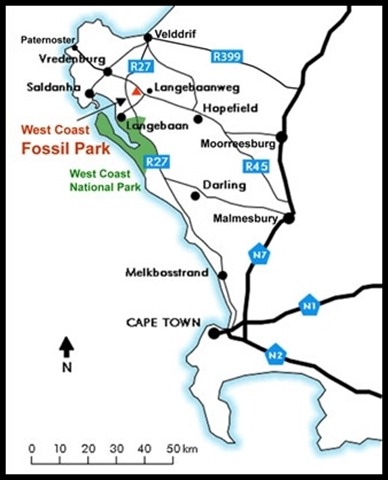
An easy and quick drive from Langebaan which offers many accommodations and activities including some kind of parasurfing and the West Coast National Park along the Atlantic. And it’s less than 100 miles (150 km) north of Cape Town.
“Today, all these animals are gone, and all we have left is their story told by the fossils that once lay buried in the rock.”

